Marc Chagall and Germany
- An
Introduction
[DEUTSCH]
Chagall was discovered in a similar manner
like Van Gogh already before the World War I as an important artist of the
modern world in Germany. German Jewish and non-Jewish patrons, who were
interested in the avantgarde, were among the collectors of his art. The art
critic and gallery owner Herwarth Walden had a pivotal role in this setting as
an agent. He made the acquaintance of Chagall in Paris in 1912/1913 and
regularly exhibited from that time onward Chagall’s art at his Berlin gallery 'Der
Sturm'.
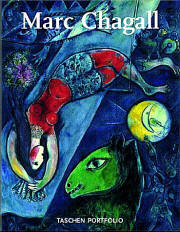 While Chagall couldn’t leave in Russia
during World War I, he became famous as an artist through Herwarth Waldens
continuous exhibitions of his works, although as a person he still remained
unknown. His works not only were kept at private collections but also at the
museums of Frankfurt, Mannheim, Essen and Dresden. Among the German collections
there were paintings which are today considered to be his absolute masterpieces
such as 'I and the Village',1911, 'Golgotha', 1912 (both presently at MOMA,
New York), 'Coachman, Horse and Cart' 1912, 'The Rabbi', ca. 1921 (both
presently at the Kunstmuseum Basel), ‘The Soldier Drinks’, 1912/1913,
'Paris Through the Window', 1913 (both presently at the Solomon R.Guggenheim
Foundation, New York) and ’To Russia, Donkeys and Others’ 1911 (presently at
the Musée National d'Art Moderne, Paris). While Chagall couldn’t leave in Russia
during World War I, he became famous as an artist through Herwarth Waldens
continuous exhibitions of his works, although as a person he still remained
unknown. His works not only were kept at private collections but also at the
museums of Frankfurt, Mannheim, Essen and Dresden. Among the German collections
there were paintings which are today considered to be his absolute masterpieces
such as 'I and the Village',1911, 'Golgotha', 1912 (both presently at MOMA,
New York), 'Coachman, Horse and Cart' 1912, 'The Rabbi', ca. 1921 (both
presently at the Kunstmuseum Basel), ‘The Soldier Drinks’, 1912/1913,
'Paris Through the Window', 1913 (both presently at the Solomon R.Guggenheim
Foundation, New York) and ’To Russia, Donkeys and Others’ 1911 (presently at
the Musée National d'Art Moderne, Paris).
Chagall left Russia for good in 1922 and
pursued his work in Berlin from May 1922 to October 1923 before he finally
settled in Paris permanently at the end of 1923. His temporary stay in Berlin
became decisive for his career as an artist because he could learn from Hermann
Struck und Joseph Budko the art of woodcut and of etching. In Berlin he created
under the patronage of Paul Cassirer his first etching series called 'Mein Leben'
(My Life).
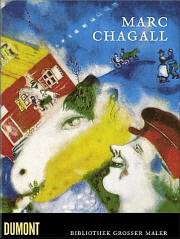 At the time, Berlin was a centre for Jewish
artistic endeavours. Notable Jewish artists were pursuing their work there e.g.
Jakob Steinhardt, Ludwig Meidner, El Lissitzky, and Issachar Beer Ryback, Jankel
Adler, all whom Chagall knew personally. Like Chagall himself, they would
especially express their Jewish identity in their graphic arts. Many of these
works simultaneously served as printed illustrations for texts. Chagall’s series
for his biography 'Mein Leben' combined textual contents and pictures in a
completely new manner, which underscores his prominent position as a Jewish
artist. At the time, Berlin was a centre for Jewish
artistic endeavours. Notable Jewish artists were pursuing their work there e.g.
Jakob Steinhardt, Ludwig Meidner, El Lissitzky, and Issachar Beer Ryback, Jankel
Adler, all whom Chagall knew personally. Like Chagall himself, they would
especially express their Jewish identity in their graphic arts. Many of these
works simultaneously served as printed illustrations for texts. Chagall’s series
for his biography 'Mein Leben' combined textual contents and pictures in a
completely new manner, which underscores his prominent position as a Jewish
artist.
At the same time this series of etchings
also made him internationally renowned as a modern illustrator. The techniques
of illustration which he had acquired in Berlin gave Chagall access to a new
field of artistic work with which he would occupy himself again and again until
the end of his life.
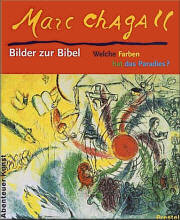 Until 1933 Chagall was a renowned painter
of modern art, even and especially in Germany where notable museum directors
such as Georg Swarzenski and Gustav Friedrich Hartlaub had purchased his
pictures. Already in 1933 these purchases came to be the target of Nazi
propaganda. In Mannheim at the exhibition "kulturbolschewistische Bilder"
Chagall’s famous painting 'The Pinch of Snuff' was pulled on a hand-cart through
the streets together with a painting from Jankel Adler and publicly jeered at. Until 1933 Chagall was a renowned painter
of modern art, even and especially in Germany where notable museum directors
such as Georg Swarzenski and Gustav Friedrich Hartlaub had purchased his
pictures. Already in 1933 these purchases came to be the target of Nazi
propaganda. In Mannheim at the exhibition "kulturbolschewistische Bilder"
Chagall’s famous painting 'The Pinch of Snuff' was pulled on a hand-cart through
the streets together with a painting from Jankel Adler and publicly jeered at.
In 1938 all of Chagall’s oil paintings and
water-colour pictures were confiscated from the public collections. Four of
these were on display at the exhibition of "Degenerate Art" (i.e. 'Purim' from
the Folkwang Museum Essen, 'The Pinch of Snuff' from the Kunsthalle
Mannheim, ' Winter' and 'Men with Cow' – two water-colour paintings from the
Städtische Galerie at the Städelsche Kunstinstitut in Frankfurt/
Main). The confiscated works were later sold in Switzerland in exchange for
foreign currencies. Today they are dispersed at notable museums throughout the
world. Paintings that belonged to private collections shared about the same
fate. For instance those that belonged to the vast private collection of
Herwarth Waldens. Today they are located in the U.S. and in Switzerland.
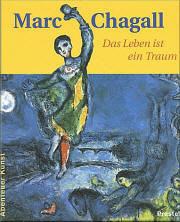 Chagall himself has made the beginning rule
of tyranny in Germany an important theme in his paintings like in 'Solitude' of
1933 and ‘The Chute of Angels’, on which he worked from 1923-1947. After he
heard of the pogroms during the so-called “Reichskristallnacht” in 1938, he
created a major work called ‘The White Crucifixion’, today in the Art Institute
of Chicago. Chagall himself has made the beginning rule
of tyranny in Germany an important theme in his paintings like in 'Solitude' of
1933 and ‘The Chute of Angels’, on which he worked from 1923-1947. After he
heard of the pogroms during the so-called “Reichskristallnacht” in 1938, he
created a major work called ‘The White Crucifixion’, today in the Art Institute
of Chicago.
He returned to this topic again and again
in the course of time thereafter to condemn murder and violence (e.g. ‘The
Yellow Crucifixion, which is presently exhibited as a loan to the Musée d'art et
d'histoire du Judaisme, Paris).
In his etchings about the bible, which he
begins in 1931, he makes the issues of guilt and atonement, revenge and
damnation a major theme. Some illustrations like the prophecies of the
destruction of Jerusalem and Babel appear to be most especially metaphors for
contemporary catastrophes.
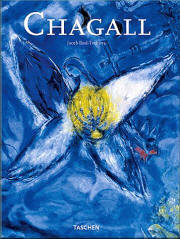 Chagall is not able to finish in France his
already begun etchings on the bible. For he needs to flee from the Germans in
1944. Only after his return from exile in the United States is he able to finish
this series from 1952 to 1956. As soon as they are brought to offer, they
immediately go out of stock. Again there are German customers among the
purchasers, e.g. Bernhard Sprengel from Hannover. Chagall is not able to finish in France his
already begun etchings on the bible. For he needs to flee from the Germans in
1944. Only after his return from exile in the United States is he able to finish
this series from 1952 to 1956. As soon as they are brought to offer, they
immediately go out of stock. Again there are German customers among the
purchasers, e.g. Bernhard Sprengel from Hannover.
Chagall is once again exhibited in Germany
during the 1950’s and now proves to be a magnet for the audiences. His pictures
bring to association the wish for reconciliation. Paintings such as "Moses
Receives the Tablets of the Law" and etchings about the bible become stylized in
the fashion of this idea as icons. At the same time museums begin to repurchase
formerly confiscated pictures and also acquire new works of art.
The Adolf-und-Luisa-Haeuser-Stiftung in Frankfurt acquires
the painting "Commedia dell'Arte" for the
lobby of the new theatre together with all the accompanying drafts.
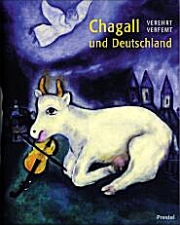 Under the banner of the politically desired
reconciliation, Chagall receives as an already very old artist the assignment to
create new windows at the church of St. Stephen in Mainz. The project is
partially supported by the local state government of the Rhineland-Palatinate.
The windows become Chagall’s last large work which he is still able to complete. Under the banner of the politically desired
reconciliation, Chagall receives as an already very old artist the assignment to
create new windows at the church of St. Stephen in Mainz. The project is
partially supported by the local state government of the Rhineland-Palatinate.
The windows become Chagall’s last large work which he is still able to complete.
Zur
Ausstellung erschien im Prestel-Verlag ein umfangreicher, reich bebilderter
Katalog.
Stiftung Brandenburger Tor Berlin
Prof. Monika Grütters und Janet Alvarado, (030) 22633016 (janet.alvarado@bankgesellschaft.de)
Marc Chagall:
Poesie, Fabeln, Impressionen
Vom 13. Februar bis zum 9. Mai 2004
in Augsburg...
hagalil.com 20-04-04 |